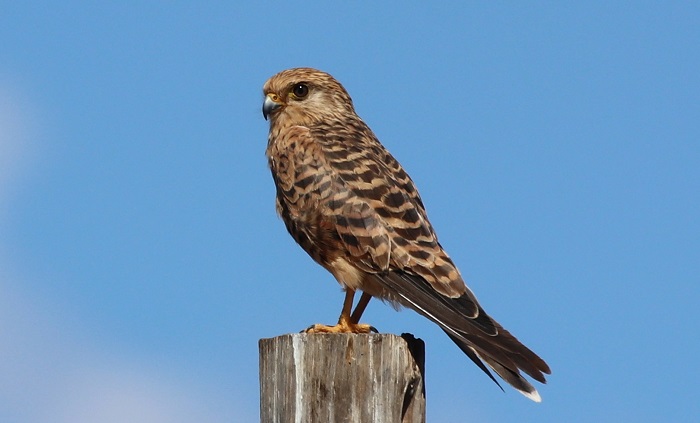Cover image Greater Kestrel by Sybrand Venter – Carnarvon district, Northern Cape – BirdPix No. 246605
Identification
The Greater Kestrel is a smallish, attractively marked raptor. It is, however, the largest Kestrel species in Southern Africa.
The overall colouration of the head and body is light ginger-brown covered in black barring, blotches, bands and streaks. The head, throat and neck are finely streaked. The streaks become bolder and more prominent on the breast and belly while the flanks are densely barred. The back is strongly marked with thick black barring and the tail is grey with broad black bands.
The head appears fairly large and rounded. The legs and bare skin around the eyes and cere are yellow and the bill is horn-grey. Adults have striking pale coloured eyes.

Rietvlei Nature Reserve , Gauteng
Photo by Ansie Dee Reis
In flight the Greater Kestrel shows heavily barred upper wings and a grey and black banded tail. The under wings are white with indistinct, grey-barred flight feathers.

Near Middelburg, Eastern Cape
Photo by Gregg Darling
The sexes are alike in plumage but they differ in size, the females are slightly larger than males.
The juveniles resemble the adults but have dark-coloured (not pale grey) eyes. They are generally darker rufous in colour and have larger black markings than the adults.
The Greater Kestrel is most likely to be mistaken for females and juveniles of the Rock Kestrel (Falco rupicolis) and Lesser Kestrel (Falco naumanni). Both are smaller and slimmer than the Greater Kestrel and have smaller, less rounded looking heads.
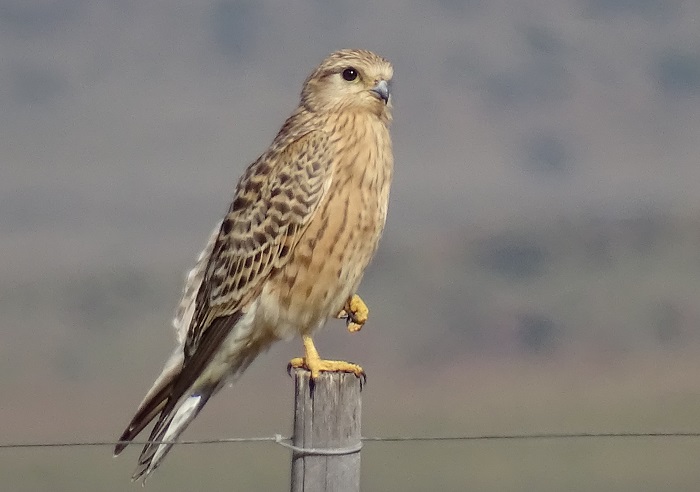
Karoo-Gariep Nature Reserve, Northern Cape
Photo by Josu Meléndez
Distribution
The Greater Kestrel is locally common throughout its range. It has a disjunct distribution in the drier regions of Southern and East Africa. It occurs patchily in East Africa from northern Tanzania, up through Kenya to Ethiopia and Sudan. It is More widespread in Southern Africa, occurring over a large part of western and central South Africa and throughout Namibia and Botswana. It is sparsely distributed in Zimbabwe, western Zambia and eastern Angola.
In South Africa it has been recorded from all provinces but avoids the Lowveld and the higher rainfall, low-lying eastern and southern coastal regions.
The distribution of the Greater Kestrel is believed to have expanded due to the clearing of woodlands for cultivation. However the loss of natural grasslands to agriculture and bush encroachment could be a concern. The Greater Kestrel is not considered threatened.

Habitat
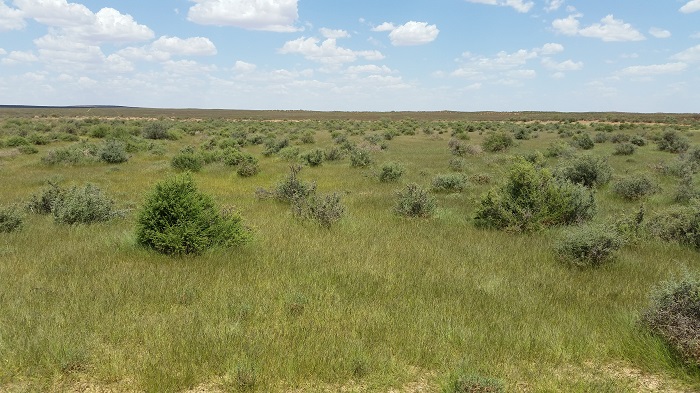
Photo by Ryan Tippett
The Greater Kestrel is a bird of open, arid and semi-arid areas ranging from desert scrub to dry, open woodlands and grassland. It is most abundant in the Kalahari and Karoo vegetation types. It is also widespread in the grasslands of central South Africa but is less numerous. The Greater Kestrel prefers open veld with short vegetation and moderate to low rainfall. Also occurs in cultivated areas in north-eastern South Africa where it is expanding its distribution.
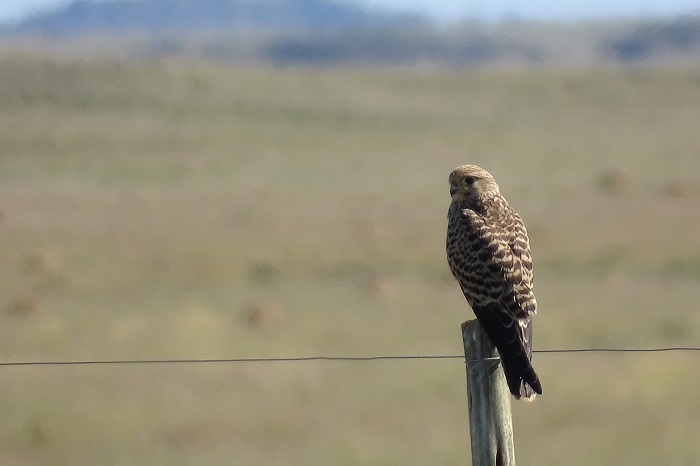
Karoo-Gariep Nature Reserve, Northern Cape
Photo by Josu Meléndez Underhill
Behaviour
Greater Kestrels are normally found singly or in pairs and sometimes in loose groups of several birds. Perches conspicuously on whatever vantage points are available, such as termite mounds, trees, and telephone poles, pylons and fences. Advertises to conspecifics that a territory is occupied by perching conspicuously. The flight is bouyant, interspersed with flapping and gliding. Seldom soars but frequently hovers in windy conditions.
Most hunting is done from a perch but they also hunt aerially, usually by hovering into the wind. Prey is generally captured on the ground but may occasionally catch small birds, termite alates and locusts in flight. Males tend to perch-hunt more often than females, and females have better hunting success from hovering than males.
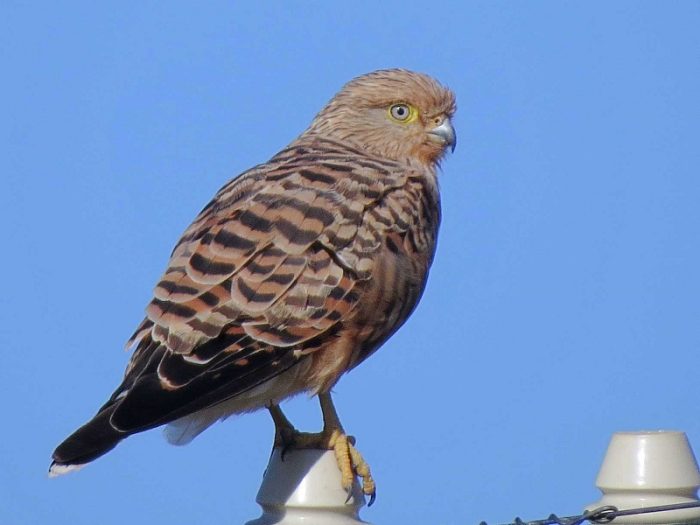
Near Middelburg, Eastern Cape
Photo by Tino Herselman
The majority of the Greater Kestrels diet consists of invertebrates especially locusts, grasshoppers, solifugids and termites. They also consume small reptiles like lizards, chameleons and snakes, as well as birds such as quails, doves and small passerines. Mammalian prey consists mostly of rodents. Greater Kestrels are not known to drink or bathe.
The Greater Kestrel breeds from August to December with a peak during September and October. Most egg laying takes place just before the Summer rains in order to maximise prey availability during the nestling period.
Pairs are monogamous and show strong mate fidelity. They do not construct their own nests and prefer to use old stick nests of other raptors or crows. They are dependant on these other species for nests which may limit the distribution of breeding birds. The pair actively defend the area around their nest against conspecifics, other raptor species and corvids (crows and ravens).

Kgalagadi Transfrontier Park, Northern Cape
Photo by David Kennedy
From 1 to 5 (usually 3 or 4) eggs are laid per clutch. The eggs are cream or buff coloured with variable reddish-brown speckling. Incubation starts with the first laid egg, as at some nests there is a distinct difference in the age and development of the young. The incubation period lasts for 32 to 33 days and is performed mostly by the female.
Both parents provision the chicks with food. Females tend to hunt close to the nest and mostly capture insects, while males hunt further afield and bring larger prey such as rodents back to the nest. The young are fully fledged after 32 to 35 days but remain dependant on their parents for at least 30 days after their first flight.
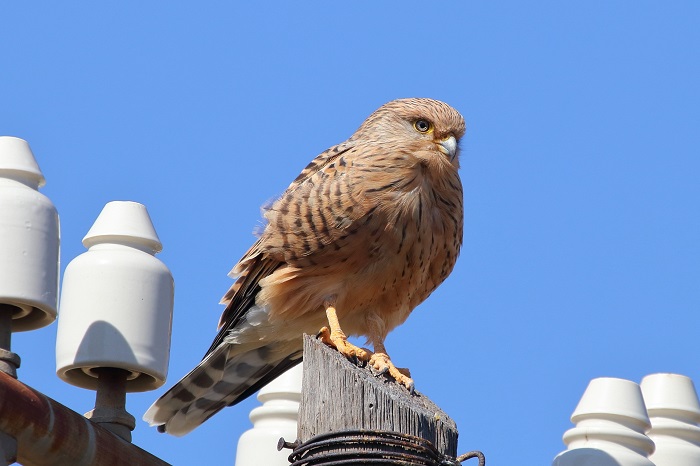
Garingboom Guest Farm, Free State
Photo by Phillip Nieuwoudt
Further Resources
This species text is adapted from the first Southern African Bird Atlas Project (SABAP1), 1997.
The use of photographs by Ansie Dee Reis, David Kennedy, Gregg Darling, Josu Meléndez, Phillip Nieuwoudt, Sybrand Venter and Tino Herselman is acknowledged.
Virtual Museum (BirdPix > Search VM > By Scientific or Common Name).
Other common names: Grootrooivalk (Afrikaans); Phakalane (Tswana); Grote Torenvalk (Dutch); Crécerelle aux yeux blancs (French); Steppenfalke (German); Peneireiro-grande (Portuguese).
Recommended citation format: Tippett RM 2023. Greater Kestrel Falco rupicoloides. Biodiversity and Development Institute. Available Online at http://thebdi.org/2023/07/26/greater-kestrel-falco-rupicoloides/

Karoo Gariep Nature Reserve, Northern Cape
Photo by Ryan Tippett

